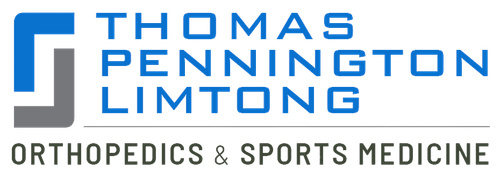 Severe shoulder joint arthritis can be treated with a shoulder replacement. As the arms are not used for walking, shoulder arthritis can usually be managed by noninvasive procedures more easily than knee or hip arthritis which is why knee and hip replacements are much more common.
Severe shoulder joint arthritis can be treated with a shoulder replacement. As the arms are not used for walking, shoulder arthritis can usually be managed by noninvasive procedures more easily than knee or hip arthritis which is why knee and hip replacements are much more common.
However, shoulder replacement may be considered for patients who do not experience relief with nonsurgical treatments. Thomas and Bigler Knee and Shoulder Institute, led by board certified orthopedic surgeons Dr. Steven C. Thomas and Dr. Gregory T. Bigler, provides orthopedic treatments to patients in Las Vegas, Nevada, and surrounding locations.
Implants
Similar to knee and hip implants, most shoulder replacements implants comprise plastic and metal. These implants positioned by using cement or by wedding them tightly in place.
To recreate the worn out top of the humeral head (arm bone), a metal ball is used. A plastic cup is used to replace the damaged shoulder blade socket (the glenoid).
Surgery
This surgery is typically performed using general anesthesia, and the patient may also receive a regional nerve block to minimize shoulder pain upon waking from the anesthesia.
The time taken for the replacement surgery is around two hours. However, the total time spent in the operating room may be over three hours including the preparation and recovery period. The surgeon places an incision between four to six inches in length, along the front part of the shoulder joint.
The surgeon commences by eliminating the arthritic cartilage and bone. They use special instruments to align the artificial shoulder in the correct position.
Temporary implants, known as “trial implants,” are placed in the bone to enable the surgeon to evaluate the stability and mobility of the new joint.
After the procedure, most patients remain in the hospital for at least one night. More surgeons are increasingly trying to perform joint replacement surgery as outpatient surgery. However, in outpatient replacement, the patient requires detailed presurgical education to prepare them for their return home after the surgery.
Rehabilitation
Rehabilitation starts right after the surgery. Patients typically meet the therapist on the day of the procedure itself. In general, surgeons will place their patients in a sling. However, they will allow this sling to be taken off for activities related to physical therapy.
A majority of surgeons will allow some range of motion right after the surgery. Patients are typically able to resume most of their normal activities within two to three months. At this time, they can also focus on muscle strengthening around the shoulder and increasing their mobility.
Risks
Shoulder replacement surgery has the same general anesthesia risks that are associated with any surgical procedure. Certain risks specific to shoulder replacement surgery are:
Infection
The occurrence of infection around the joint implant is a serious complication. To avoid this risk, significant measures should be taken.
Dislocation/Instability
The implanted joint has a ball-and-socket design. Therefore, it is vital for the surgeon to balance the soft tissues surrounding to shoulder to make sure the implant remains in position.
Implant Loosening
Implanted joints may become loose over time. There are on-going efforts in the development of implants with higher longevity, but this has not yet been perfected.
Board certified orthopedic surgeons Dr. Thomas and Dr. Bigler receive patients from Las Vegas, Nevada and nearby areas for orthopedic treatments.
If you would like to schedule an appointment or learn more about the Knee and Shoulder Institute procedures & treatments performed by Las Vegas, Nevada board-certified surgeons Steven C. Thomas, MD and Gregory T. Bigler, MD. Contact the office today click here.
